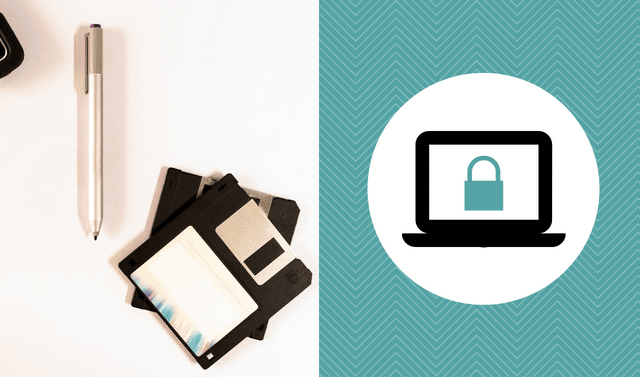Q. What is lamination?
A. Two processes are used to laminate documents: One uses heat to seal the document between two sheets of plastic; the other uses acidic adhesive.
Q. Why is lamination a bad preservation tactic?
Q. Why do people laminate stuff anyway?
A. It’s based on the misconception that lamination protects documents. In the 1950s and 1960s, many libraries laminated historical documents with the mistaken belief it would preserve the items. The practice only accelerated their deterioration. While people’s intentions were good, the result was bad.
Q. How are some laminating products “acid-free?”
A. “Acid-free” is a misnomer and doesn’t mean the product is archival. Archival materials are actually pH-neutral (with a pH of 7) or pH-buffered (7.5 to 8.5).
Q. What are safe alternatives to laminating?
A. Anything you do should be easily undone without damaging the items. Encapsulation is an excellent idea. You can enclose items in chemically stable polyester plastic sheets sealed with pH-neutral double-sided tape.
Q. What if something’s already been laminated?
A. Conservation technology has gotten to the point where it’s possible to undo this, but it’s extremely expensive. If you can’t afford to have the work undone — that’s 95 percent of us — try to neutralize it through environment. Keep the laminated item in moderate temperature (68 degrees Fahrenheit) and relative humidity (45 to 50 percent), and away from light. Interleave laminated items with pH-buffered tissue paper and store them in archival-quality flat boxes.
Q. What about copying the image to save it?
Hollinger Metal Edge, (800) 862-2228, <www.hollingermetaledge.com>
University Products, (800) 628-1912, <www.universityproducts.com>
OfficeMax, (800) 283-7674, <www.officemax.com>
- Measure the length and width of the document to be encapsulated. On a cutting mat with a grid, cut two sheets of archival polyester plastic large enough to leave a 1-inch border around the document.
- Place one plastic sheet over the document and a paperweight on top. Then center the sheet over the document using the grids on the cutting mat as your guides.
- Apply 1/4-inch wide, pH-neutral double-sided tape (see resource roundup, opposite page) to each edge of the sheet, leaving 1/8-inch of space between the document edge and the tape, and between the ends of the tape strips. (Don’t peel off the backing strips on the tape just yet.)
- Place the document on top of the taped side of the polyester sheet and then place the second sheet over the document. Slowly peel the tape strips one at a time while holding the polyester sheets in place, and then use your finger to seal them together.
- Use the ruler to trim the excess plastic with an X-Acto knife or scissors. Rub a soft cloth over the tape strips to complete the seal. Use a pair of scissors to round off the pointed edges of the polyester sheets.





